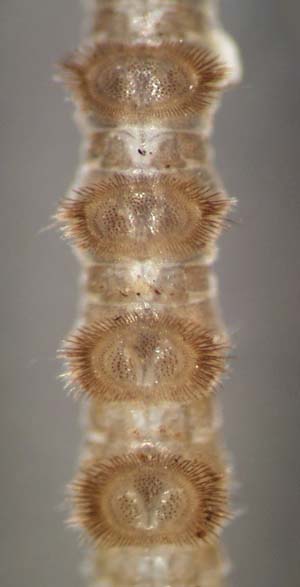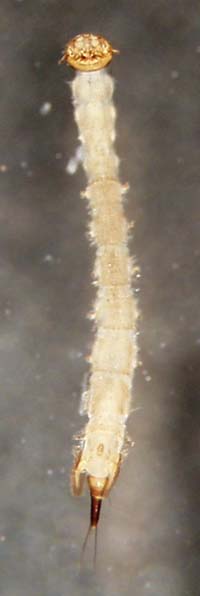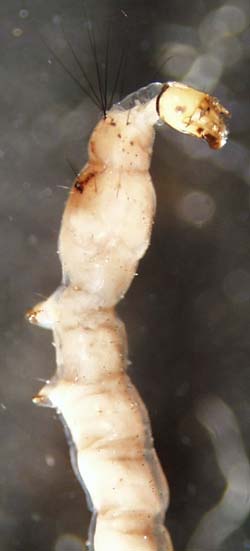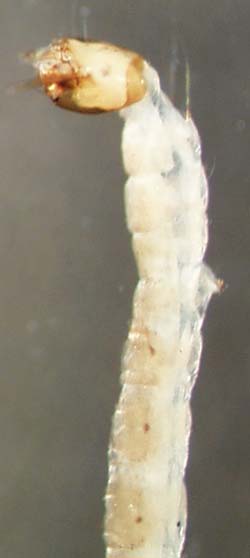
THE XERCES SOCIETY FOR INVERTEBRATE CONSERVATION Aquatic Invertebrates in Pacific Northwest Freshwater Wetlands |
| Identify taxa |
Dixidae (dixid midges) |
Dixidae are among the most commonly collected invertebrates in wetlands. They are air breathers and spend much of their time lying against a rock or other hard substrate at the water's surface. They maintain a characteristic U-shaped posture, with their head and the tip of their abdomen in the water and the rest of their body exposed to the air on the damp substrate. Dixids regularly swim or climb into the water to scavenge detritus. Unlike their close cousins the mosquitoes and phantom midges, dixids have three distinct thoracic segments that are not enlarged relative to the rest of the body. The three dixid genera are fairly easy to tell apart based on the number of abdominal prolegs (on first and second abdominal segments) and the pattern of hairs on the top of each abdominal segment. Adult dixids look a lot like mosquitoes, but lack the sucking proboscis that makes mosquitoes such a nuisance and health threat. The genus Dixella has been collected in wetlands in the Willamette Valley in Oregon. |
Size: medium Identifying feature(s): three distinct thoracic segments that are not particularly swollen; prolegs on abdominal segments Habitat: riffles and margins; wetlands; at water's surface. Tolerance to pollutants: moderate |
 |
|
© 2007 Xerces Society
Contact info@xerces.org






